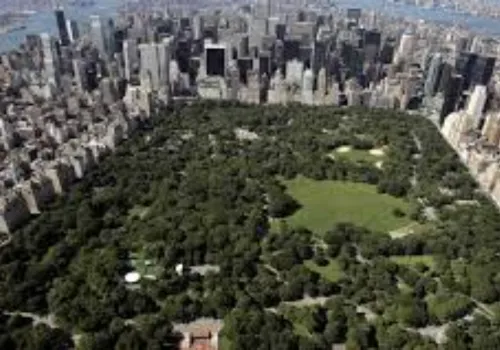
New York’s Central Park, now an iconic 843-acre green space, was once a rugged, polluted area that required massive transformation. The construction of this urban park in the heart of Manhattan wasn’t just a feat of engineering—it involved the forced removal of residents and the use of explosives and intense labor to reshape the landscape.

New York City’s Central Park feels like an untouched natural retreat amidst Manhattan's urban hustle, but every inch of this 843-acre park was meticulously crafted. In 1853, New York state lawmakers approved the idea of creating an expansive public park, the first of its kind in the United States, on what was deemed undesirable land.
“It was junk land,” says Cynthia Brenwall, a conservator at the New York Municipal Archives. “It was not nice, beautiful and hilly like it is now. It was rocky and full of bogs. There were gross tanneries and bone-boiling plants. It was attractive because it was easily attainable.”
To transform this “junk land” into one of the world’s most visited and celebrated parks, more than 20,000 workers wielded pickaxes, carts, and explosives from 1857 to 1866, removing nearly 7 million cubic feet of rock and soil to give Central Park its signature lush landscape.
As the population of New York grew from 327,000 in 1840 to nearly 600,000 by 1850, city planners recognized the need for a public green space where people could escape the chaos and pollution of city life.
“Poor New Yorkers who lived in tenements weren't going out into the country on the weekends,” says Brenwall. “They didn’t summer in the Hamptons. They worked six days a week and had one day to recuperate. Central Park was supposed to be a way to be out in the ‘country’ without leaving the city.”
In 1853, New York state designated 775 acres of land between Fifth and Eighth Avenues, spanning 59th to 106th Streets, for the park.
“New York City leaders were really ahead of their time by anticipating the city’s massive population growth,” says Anne "Dede" Neal Petri, president and CEO of the Olmsted Network. “A city with such a dense population would really need contact with the therapy of nature.”
However, to make way for the park, around 1,600 residents, including a predominantly African American community called Seneca Village, were forced to leave. Established in 1825, Seneca Village had become a haven for Black New Yorkers, many of whom owned property and had voting rights. But by 1857, the city used eminent domain to remove the village’s residents.
In 1856, the initial design for the park was created by cartographer Egbert Viele. However, his plan didn’t inspire, prompting the park commissioners to hold a competition for a more imaginative design. Frederick Law Olmsted, who was hired as the park superintendent, teamed up with British architect Calvert Vaux to create the winning "Greensward Plan."
Olmsted and Vaux’s design, which emphasized the “democratic” nature of green spaces, won the competition. Olmsted’s background in farming, his European travels, and his love for nature were pivotal in his vision for Central Park. He and Vaux created a design that balanced nature and architecture, envisioning a peaceful and scenic oasis amidst the urban bustle.
Olmsted and Vaux’s vision required transforming the rugged land into the park we know today. The land was full of rock outcroppings and bogs, requiring the use of explosives—166 tons of gunpowder were used, more than during the entire Battle of Gettysburg.
“If you climb up one of those big, rocky knolls, look out and picture them everywhere throughout the lower part of the park,” says Brenwall. “Consider what it took to smash all of those rocks and clear them out. The human manpower that went into making Central Park is really amazing.”
Teams of workers labored to move and reshape the land, and tens of thousands of trees were planted, making the park's hills and meadows come to life. Olmsted’s design also included transverse roads that allowed carriages to cross the park without disturbing the serenity of the park’s green space.
“The visit to Birkenhead Park was an ‘aha!’ moment for Olmsted,” says Petri, referring to a park in Liverpool that greatly influenced Olmsted’s design philosophy. “He came back to the States and started writing.”
The first phase of the park was completed in 1866, at a cost of $5 million—three times its original budget—but parts of the park opened as early as 1858. By 1860, the park was already attracting visitors, with over 2.4 million people enjoying the park, more than three times the city's population at the time.